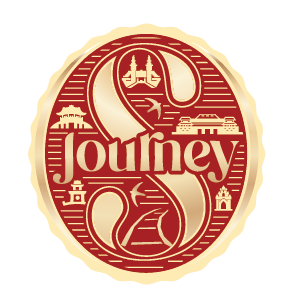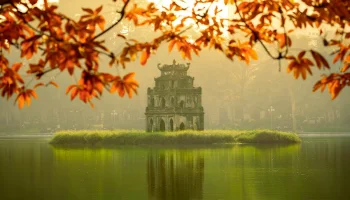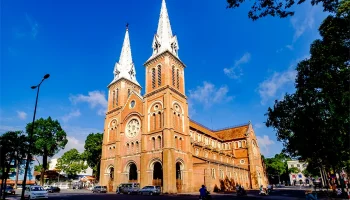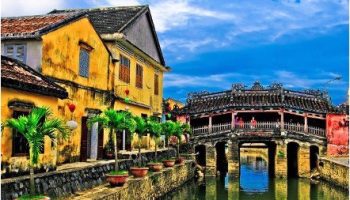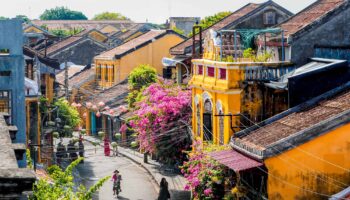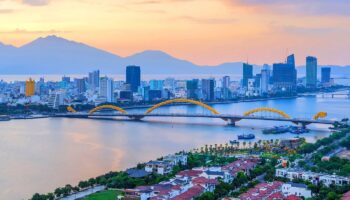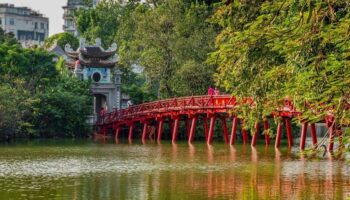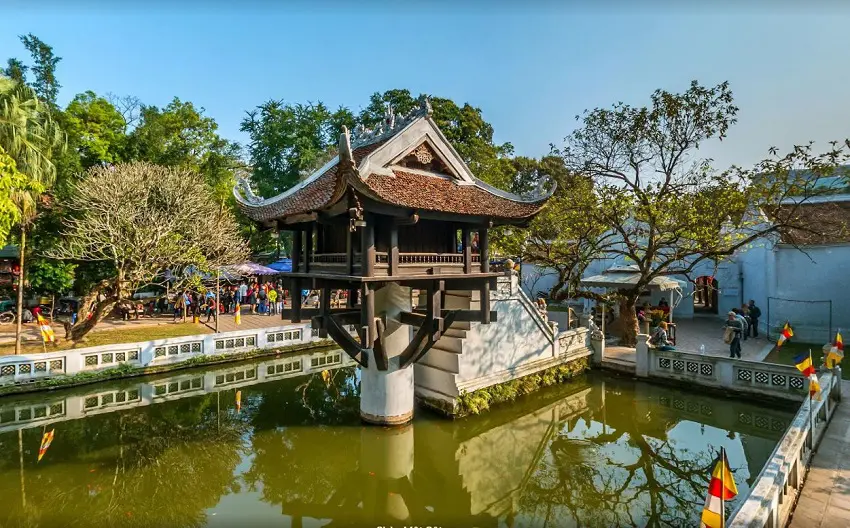
One pillar pagoda Hanoi: The most unique pagoda in Vietnam
The One Pillar Pagoda in Hanoi is one of Vietnam’s most unique and iconic structures. Built-in 1049 during the Ly Dynasty, this historic pagoda attracts many visitors who admire its distinctive architecture and deep cultural significance.
Table of Contents
ToggleI. A Brief History of the One Pillar Pagoda
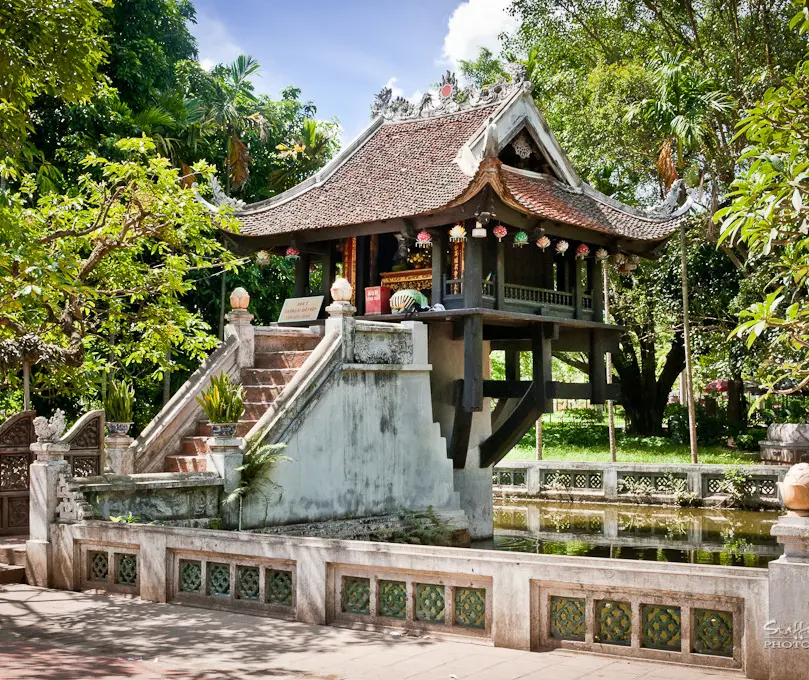
The One Pillar Pagoda is one of Vietnam’s most unique and iconic structures
Introduction to the One Pillar Pagoda
The One Pillar Pagoda is a famous Buddhist temple in Hanoi, Vietnam. It is known for its unique design, resembling a lotus flower. The pagoda stands on a single stone pillar in the middle of a small pond.
Founder and Historical Significance
The One Pillar Pagoda was built by Emperor Ly Thanh Tong in 1049. Legend says that the Emperor had a dream about the Goddess of Mercy, who handed him a baby son while seated on a lotus flower.
Inspired by this dream, he constructed the pagoda to show his gratitude and to pray for blessings.
Renovations and Changes Over the Centuries
The pagoda has undergone several renovations and changes throughout its long history. During the 11th century, the original wooden structure was built. In 1954, the pagoda was destroyed by the French, but it was quickly rebuilt in 1955.
Over the years, it has been restored and maintained to preserve its historical and cultural importance. Today, the One Pillar Pagoda remains a cherished symbol of Vietnamese heritage and spirituality.
II. The outstanding architecture of One Pillar Pagoda

The pagoda stands as a representation of spiritual purity rising
2.1 Lotus Station
The One Pillar Pagoda’s design is inspired by the lotus flower, symbolizing purity and spiritual awakening in Buddhism. Built on a single stone pillar, the pagoda represents a lotus rising above a pond, reflecting the Emperor’s dream of the Goddess of Mercy seated on a lotus.
The surrounding lotus pond enhances this symbolism, with the pagoda standing as a representation of spiritual purity rising above the material world. Today, the One Pillar Pagoda remains a significant symbol of Vietnam’s cultural heritage and spiritual beliefs.
2.2 Three-arched-entrance Gate
The Three-Arched Entrance Gate of the One Pillar Pagoda is a traditional entryway with deep symbolic meaning.
The central arch is the largest, representing the three paths of Buddhist practice: morality, concentration, and wisdom. Intricate carvings and calligraphy adorn the gate, marking the transition from the ordinary world into the sacred space of the pagoda.
Historically, this gate has been a significant feature, welcoming visitors for centuries. It serves as both a guardian of the pagoda and a reminder of the spiritual journey one undertakes when entering this revered site.
2.3 The stairs leading to the main hall
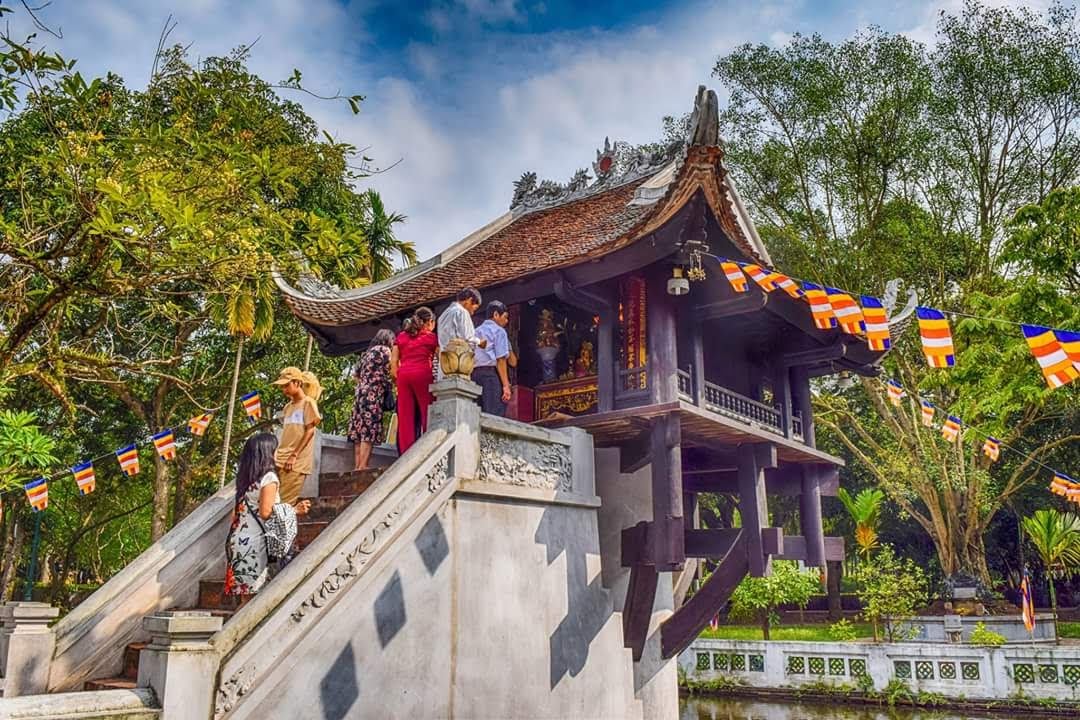
This historic pagoda attracts many visitors
The stairs leading to the main hall of the One Pillar Pagoda are narrow and steep, symbolizing the ascent towards enlightenment.
Each stone step represents the effort required to reach spiritual awakening, encouraging mindfulness in those who climb.
These stairs serve as a transition from the material world to a sacred space. As visitors ascend, they enter a place of meditation and worship, making the climb a meaningful and reflective part of the pagoda experience.
III. Key festivals and events held at the pagoda
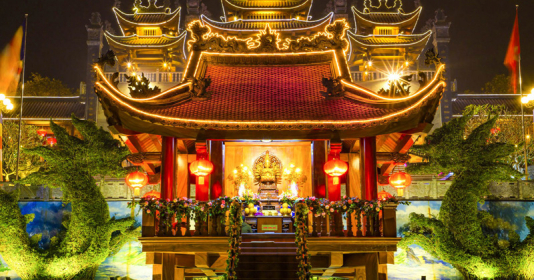
There’re several annual events occur at the One Pillar Pagoda
- Vesak (Buddha’s Birthday): Celebrated in April or May, Vesak is one of the most important festivals at the One Pillar Pagoda. The temple is adorned with flowers and lanterns, and devotees gather for prayers, chanting, and rituals to honor Buddha’s birth, enlightenment, and passing.
- Lunar New Year (Tet Festival): During Tet, the pagoda is a popular spot for seeking blessings for the new year. Visitors pray for health and prosperity, with the temple beautifully decorated and ceremonies held to honor ancestors and deities.
- Full Moon Festivals: On full moon days, the pagoda hosts special ceremonies where devotees offer incense, chant prayers, and seek blessings, marking the auspicious time in Buddhism for spiritual activities.
- Anniversary of the Pagoda’s Founding: This annual event commemorates the pagoda’s founding by Emperor Ly Thai Tong in 1049, featuring religious ceremonies and cultural performances to celebrate its historical significance.
IV. A simple guide for visitors
Location and Accessibility:
– Location: The One Pillar Pagoda is in Ba Dinh District, within the Ho Chi Minh Mausoleum complex grounds.
– Accessibility: It is easily accessible from central Hanoi. Visitors can take a taxi, bike, or walk from the nearby areas.
Opening Hours: 8:00 AM to 5:00 PM daily
It may be closed for maintenance on national holidays, so checking ahead is advisable.
Best Times to Visit:
Best Times: Early mornings or late afternoons are ideal for visiting to avoid the peak crowds and enjoy cooler temperatures. Weekdays are generally less crowded compared to weekends.
→ Discover the full SJourney itinerary from Hanoi to Ho Chi Minh City, with unique stops along the way HERE
Nearby Attractions:
– Ho Chi Minh Mausoleum: Just a short walk from the pagoda, The Ho Chi Minh Mausoleum is a solemn and revered site, where the preserved body of Vietnam’s founding leader, Ho Chi Minh, rests.
The mausoleum is an imposing granite structure, designed to honor his legacy. Visitors come to pay their respects, walking through the quiet halls filled with a sense of national pride and reflection.
The surrounding gardens add to the peaceful atmosphere, making it a place of deep historical significance for the Vietnamese people.
– Presidential Palace: Close to the pagoda, the Presidential Palace is a grand and historic building, often serving as the official residence and workplace of a nation’s president.
It is a symbol of political power and national pride, typically featuring impressive architecture, elegant interiors, and beautifully landscaped gardens. This iconic landmark often hosts important state ceremonies and diplomatic meetings, reflecting the history and culture of the country it represents.
– Temple of Literature: A bit further away but still within Hanoi, this ancient temple is dedicated to Confucius and is a significant cultural site.
These attractions make for a rich cultural and historical itinerary when visiting the One Pillar Pagoda.
V. Conclusion
The One Pillar Pagoda symbolizes Vietnam’s rich heritage and architectural ingenuity. Its distinct design and historical importance make it a must-visit destination for those exploring Hanoi. As a testament to Vietnam’s cultural and spiritual history, the pagoda continues to inspire and captivate all who visit.
Contact us:
Website: https://vietnamluxuryexpress.com/
Email: inquiry@vietnamluxuryexpress.com
Hotline 24/7: +84 975 119 466
SEE MORE:
Vietnam Luxury Train – The Ultimate Experience For All Tourists
Discover the World’s Best: Top 30 Luxury Trains
